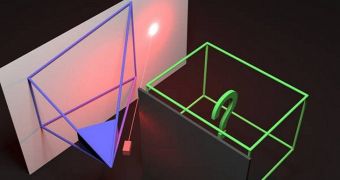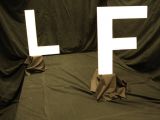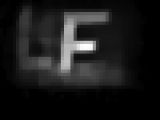The number of people who research things just “For Science!” may not be as large as mad science fiction would have us believe, but progress still happens even (one might say “especially”) when there's an actual practical goal in mind. That's how a certain new type of camera was created.
Looking around a corner is one of those actions that can have great impact upon the individual, and the world at large even. It depends on whether you're in familiar territory or not, and on the importance of the goal that lies beyond said corner.
Just needing to look around a corner before traveling down a path or corridor suggests that there might be something worth avoiding on the other side.
A student trying to avoid an irate principal won't have much of an impact in the grand scheme of things, whether he succeeds or not.
If you're a special forces member on a mission to diffuse a hostage situation, though, and if one of those hostages is the president, then your ability to look around corners without being noticed can have a huge importance.
Scientists at the University of Bonn and the University of British Columbia have come up with a way to look around corners without actually looking around corners.
Essentially, they've made a camera that can do it in your stead. A laser shines on a wall, and the camera watches the scene, showing just white ingrain wallpaper with a bright spot of light through the lens.
A computer records the images and processes the data, little by little, until the outlines of an object appear on the screen. The object located behind a partition, around the corner as it were.
The secret is that the computer processes diffused light in order to build an image of what lies in wait just around the corner, outside the field of view.
In other words, a mathematical procedure reconstructs whatever lies around the corner by projecting light on the wall opposite the spot where you would normally look. Essentially, you transform the wall into a mirror, by measuring the sum of numerous light reflections. You may know the technique as multipath inversion.
The reflections reach the camera through different paths and are superimposed on each other on the image sensor. The mathematical algorithm just processes the data and rebuilds the image into something intelligible.
It is kind of complicated when you could just stick out a hand mirror to look around the corner that way, but could be useful if you can't approach due to laser tripwires or motion sensor-based surveillance technology. Alas, only rough outlines can be seen for now.

 14 DAY TRIAL //
14 DAY TRIAL // 

